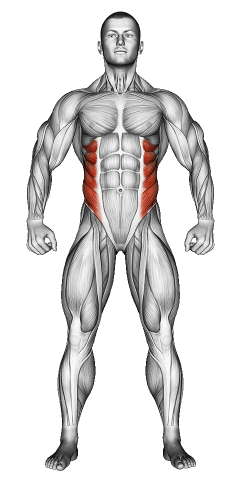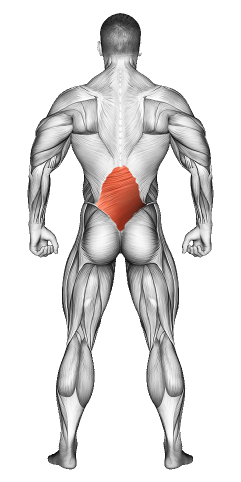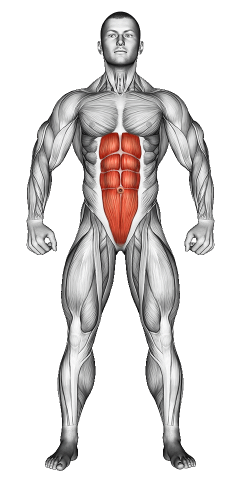Russian Twist: Video Tutorial & Exercise Guide

Written By: Claude Michael
Updated: Oct 13, 2024
| Workout | Russian Twist |
| Primary Muscle Group | Obliques |
| Secondary Muscle Group | Lower Back, Abs |
| Equipment Required | Bodyweight |
| Force Type | Rotational |
| Mechanics | Isolation |
| Exercise Type | Strength |
| Difficulty | Beginner |
Russian Twist: Video Tutorial & Exercise Guide
- 1.Russian Twist: Muscle Groups
- -1.1Primary Muscle Group
- -1.2Secondary Muscle Group
- 2.Russian Twist: Step-by-Step Guide
- 3.Russian Twist: Overview
- 4.Russian Twist: Benefits
- 5.Russian Twist: Pro Tips & Advanced Techniques
- 6.Russian Twist: Progression Plan
- 7.Russian Twist: Frequently Asked Questions (FAQs)
Secondary Muscles Group
Russian Twist: Step-by-Step Guide
- Step 1: Sit on the floor with your knees bent and feet flat on the ground. Lean back slightly to engage your core, keeping your back straight.
- Step 2: Clasp your hands togClaude in front of your chest, or hold a weight or medicine ball for added resistance. Lift your feet a few inches off the ground to increase the difficulty.
- Step 3: Twist your torso to the right, bringing your hands or the weight towards the floor next to your hip. Focus on rotating from your torso rather than just moving your arms.
- Step 4: Twist back to the center, then rotate to the left side, bringing your hands or weight toward the floor by your left hip. Keep your core engaged throughout the movement.
- Step 5: Continue alternating sides for the desired number of reps, keeping a steady rhythm and maintaining control throughout the movement.
Russian Twist: Overview
The Russian Twist is a core-strengthening exercise that targets the obliques, lower back, and hip flexors. It’s a great movement for improving rotational strength and stability, which is crucial for athletes and anyone looking to enhance their core fitness.
This exercise can be performed with or without weights, making it accessible to all fitness levels. Adding resistance increases the intensity, making it a highly effective movement for building core strength and endurance.
Russian Twist: Benefits
The Russian Twist strengthens your obliques, helping to sculpt the sides of your waistline and improve rotational movement. It’s also great for enhancing balance and stability, as the movement requires control to keep your feet elevated and core engaged.
Additionally, this exercise improves coordination and posture, which can translate into better performance in sports and daily activities. The twisting motion engages the entire core, making it a comprehensive core workout.
Russian Twist: Pro Tips & Advanced Techniques
To get the most out of the Russian Twist, focus on rotating your torso rather than simply moving your arms. Keep your movements controlled and avoid rushing through the reps. If you're looking for more of a challenge, increase the weight of the dumbbell or medicine ball or slow down the tempo for increased time under tension. Ready for a tougher variation? Try extending your legs out straight for an added balance challenge.
Russian Twist: Progression Plan
Beginner
Intermediate
Advanced
Russian Twist: Frequently Asked Questions (FAQs)
What muscles do Russian Twists target?
+Russian Twists primarily target the obliques, but they also engage the lower back, abdominals, and hip flexors for stability.
How can I make the Russian Twist easier?
+Keep your feet on the ground for more stability, or perform the exercise without weights until you're comfortable with the movement.
How do I make the Russian Twist more challenging?
+Hold a heavier weight or slow down the rotation to increase time under tension. You can also extend your legs or keep them elevated throughout the exercise.
How often should I do Russian Twists?
+Incorporate Russian Twists 2-3 times per week as part of your core routine. They pair well with other ab exercises like planks and leg raises.
What common mistakes should I avoid?
+Avoid rounding your back or using momentum to twist. Focus on controlled rotations, keeping your spine neutral and core engaged.
Share
Don’t Wish for It, Work for It – Join the FlexXP Newsletter Today!
Thank you for signing up for the FlexXP Newsletter!
This site is protected and the Google Privacy Policy and Terms of Service apply.


